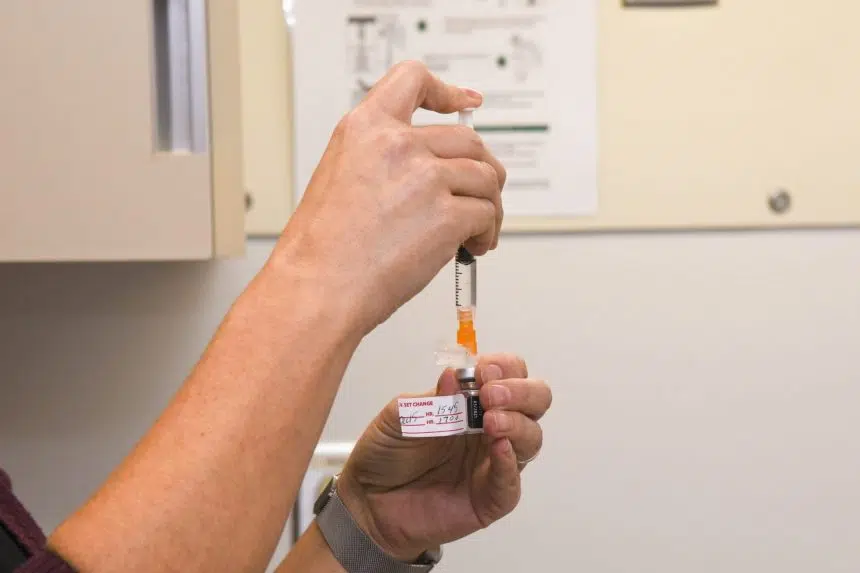A Saskatoon pediatrician is filled with “so much happiness” now that a COVID-19 vaccine for children under the age of five has got the green light.
“This is a group that hasn’t been able to get vaccinated until now and so for our families to have that peace of mind to be able to get it, it’s a great thing,” said Dr. Ayisha Kurji, a general pediatrician and assistant professor of pediatrics at the University of Saskatchewan.
Even though it might seem like it, Kurji said it’s important to remember that COVID isn’t over, with cases once again rising and many places declaring new waves of the virus.
“It’s still something we need to think about getting our kids vaccinated for,” she said.
With the summer weather and time being spent outdoors, Kurji said it’s a safer time. However, with fall weather looming, people will soon be spending more time inside, giving more opportunities for COVID to spread once again.
Kurji has been hearing lots of excitement from parents she has been speaking with about the coming availability of the newly approved vaccine, with the biggest question being how soon parents will be able to get their kids their shot.
While COVID largely hasn’t proven too severe for children, Kurji warns it can still make some kids very ill.
“We just don’t want any kids to suffer that if we can do something to prevent it, which is what the vaccine can do,” she said.
To parents who might be hesitant about the vaccine and keeping an eye on the data, Kurji said efficacy rates might be raising a red flag — with efficacy for this new child’s vaccine much lower than that of the adult vaccine when it was approved.
“The important thing to remember is it’s two different times,” Kurji said.
The pediatrician explained the efficacy for the adult vaccine was determined before the Omicron variant began infecting people. Because that strain is much more infectious, many more people have become sick, even despite being vaccinated.
The newly approved children’s vaccine was developed and approved now that the Omicron variant continues as a dominant strain of the virus.
“The important thing to look at is, I would say, not those per cent numbers that are coming out but the immune response,” Kurji said.
Kids from six months to five years are showing the same immune response with the vaccine as was seen in adults initially, Kurji explained, “which tells us that it should be just as effective.”
She called that a reassuring factor, along with the knowledge that the vaccine, while it may not entirely prevent illness, will prevent more severe infections.
“(The vaccine) looks like it’s going to be just as good for protection,” she said.
Additionally, with the exception of sore arms and some fever, young children seem to have much fewer side effects from the shot itself.
“They didn’t see anyone with any serious adverse events in the vaccine population,” she said.
Kurji said she isn’t sure at this point whether the COVID vaccine will make its way into the usual assortment of routine shots and boosters children receive during their development, especially as boosters — even now — are still focused on adults, as they tend to get the most sick.
“I think if COVID is here to stay for a little while, hopefully we’re going to see everybody vaccinated as is appropriate,” she said.







